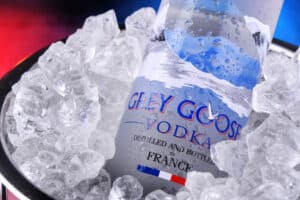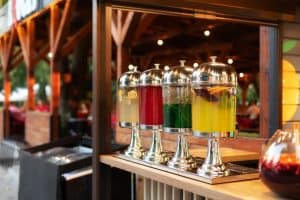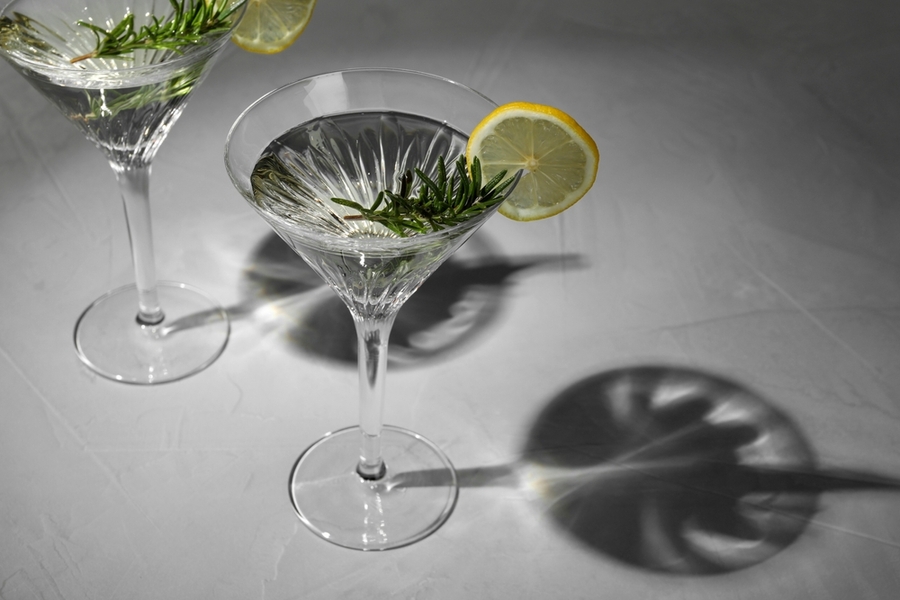
We can divide the cocktail world into two camps: those who like and order martinis and those who don’t. We hope you will reconsider your position because a whole world of flavors awaits exploring!
There are many ways to mix up a martini, and with a bit of research, we’re sure we can convince you to at least try a martini once. So, if you’re wondering what a martini tastes like, read on and find your favorite.
The classic martini recipe is four parts gin to one part of dry vermouth. Luckily that recipe is not set in stone. Whipping some up at home is the best way to discover what a martini tastes like.
Tastes you can expect from a martini include herbal notes due to the vermouth and citrus mixed with other botanical flavors due to the gin. The olives can add a layer of saltiness. The vermouth’s herbal taste might appeal if you prefer vodka over gin. A Perfect Martini offers the best of both worlds in a glass — the perfect balance of dry and sweet.
We’ll investigate the base ingredients, gin, vodka, and vermouth, to give you an idea of each flavor profile before we delve into a few types of martinis. We’ll also look at some ‘imposter’ martinis that took the world by storm by modifying the martini recipe to provide you with some balance.
What Does a Martini Taste Like?
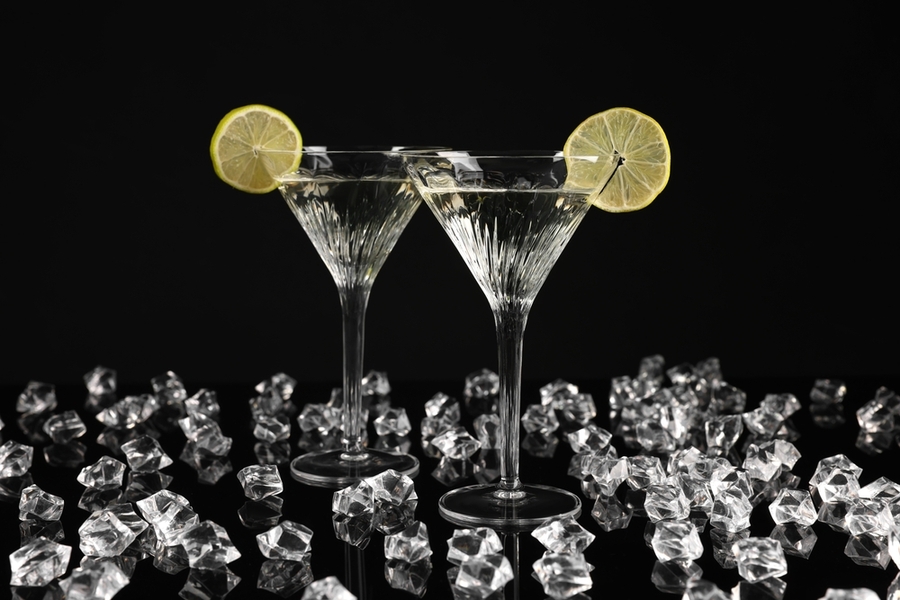
The answer depends on what you like. A martini can be sweet, bitter, bitter-sweet, or briny — there are many options. There’s also the question of which ingredients you’re using —gin or vodka, sweet or dry vermouth. Even the garnish can influence the final taste of a martini.
So let’s investigate further and help you determine which one you like the most.
Ingredients
Suppose you understand the ingredients in a martini. In that case, it might give you a better idea of the taste you can expect when you order a martini.
There is only one rule we need to share with you before we delve into the ingredients —always use the best, top-shelf liquor you can afford.
There’s no point in mixing a martini with sub-standard ingredients because you won’t have the best martini drinking experience.
Gin

The traditional choice for martinis is a London dry gin, also regarded as the benchmark for gins. As the name suggests, it has a dry taste — don’t expect a sweet taste here! Juniper berries are the primary ingredient when distilled gin, which gives a taste of pine or citrus.
Plymouth gin is another option if you feel more playful eschewing tradition. It has a slightly fruity taste and is full-bodied and highly aromatic. This is an excellent gin for fruity cocktails as well.
Old Tom is sweeter than London dry gin, and citrus notes are present.
Vodka

Traditional vodka tastes neutral. That’s it. However, the base material from which it was distilled influences the final taste.
Sometimes you may detect spicy notes; other times, bread or even hints of fruit.
Vermouth
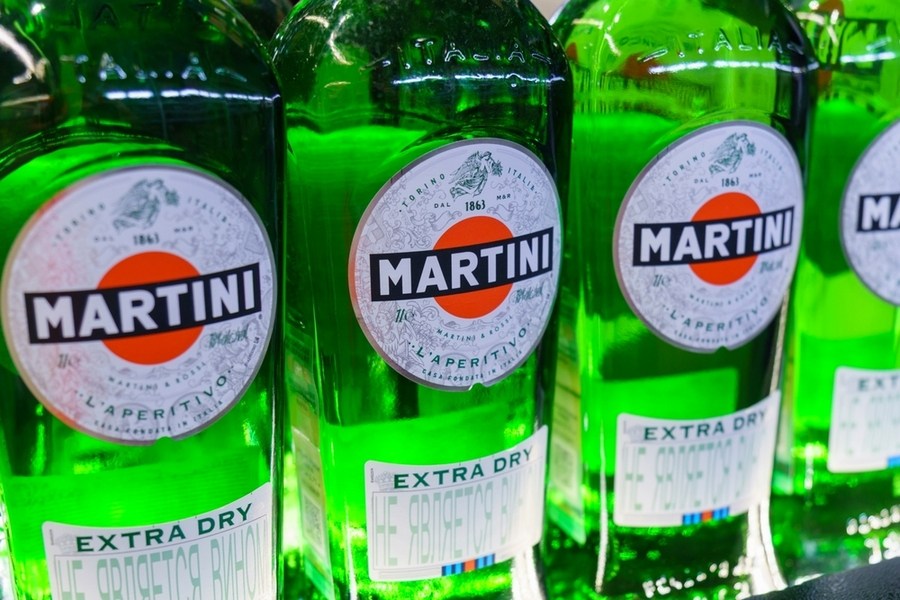
Every vermouth producer has their own secret recipe when they produce vermouth. The two basic styles are dry and sweet. Dry or French, or white vermouth is usually clear or pale yellow. Dry means there’s minimal sugar present—the traditional choice for a classic martini.
Again, as the name suggests, this is the sweet version of vermouth and usually has a reddish or red-brown color. It may be sweet but doesn’t have the sweetness of liqueur such as amaretto.
Sometimes it is referred to as Italian vermouth or red vermouth. You can expect tastes such as spices and herbs with a unique vanilla aroma. A white version is also available, usually labeled as blanc (in French)or bianco (in Italian).
You can read more about vermouth here. Remember, vermouth has no long shelf life, so it’s best consumed within three months or less after you crack open the bottle.
Forerunners of the Martini
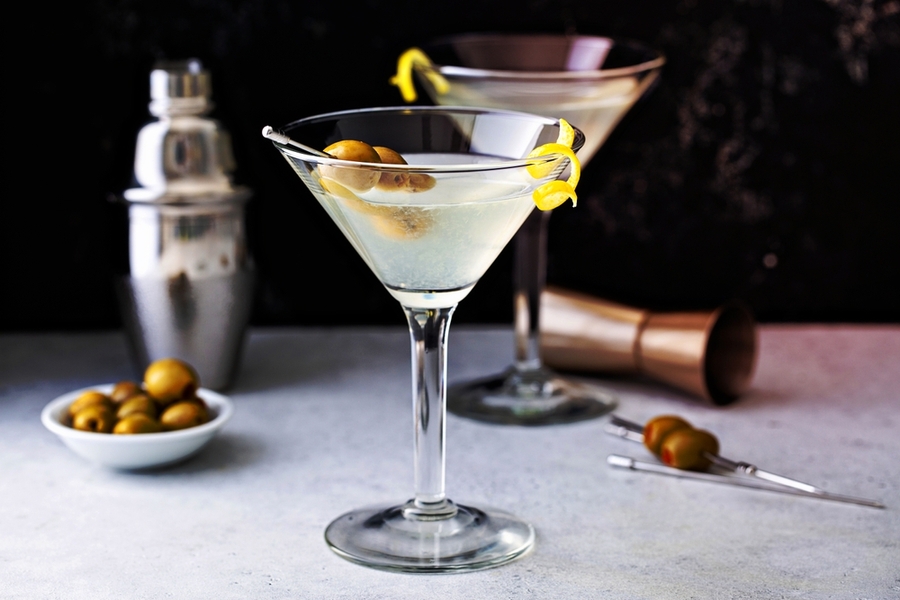
The Martinez might have been a spin on the Manhattan whiskey-based cocktail. We include it along with the Burnt Martini due to their whiskey associations. The theory is also that the Martini evolved from the Martinez cocktail.
We’re showing our respect to the family tree of martini cocktails —Manhattan is the great-grandparent leading to grandparent Martinez, finally evolving into the classic martini. Quite a lineage, we have to admit!
The dry martini we know today evolved from the slightly sweeter Martinez. People have been trying to move away from sweet drinks for over a century… According to Difford’s Guide:
“The Martini turns progressively drier. Remember, the Martini, like the Martinez and or the Marguerite it morphed from, was initially sweet, hence the need to distinguish its descendant as a ‘Dry’ Martini,’ still very heavy on the vermouth by modern standards. The ‘Dry Martini’ most likely appeared with the emergence of the London Dry gin style and was helped by Martini & Rossi running newspaper advertisements in the U.S. towards the end of the 19th century and at the beginning of the 20th century for their recently launched Dry Martini vermouth with the strapline ‘It’s not a Martini unless you use Martini.’”
The Martinez takes the best of the Martini and Manhattan. It combines them into a single cocktail —herbal tastes (the Manhattan part) mingle with a soft hint of juniper berries (the Martini part). It added a little bit of maraschino cherry liqueur instead of a brandied cherry from the Manhattan cocktail’s side of the family.
Types of Martinis
Let’s look at some of the most common martini options most bars will offer to help you find the best martini that appeals to your taste. The proportion of gin or vodka to vermouth makes a difference in the final taste, be sure to check out these ratios before you start mixing up martinis.
History buffs might be interested in reading about the history and evolution of the martini here. We highly recommend looking at the recipes here to find a martini that would appeal to you.
Classic Martini
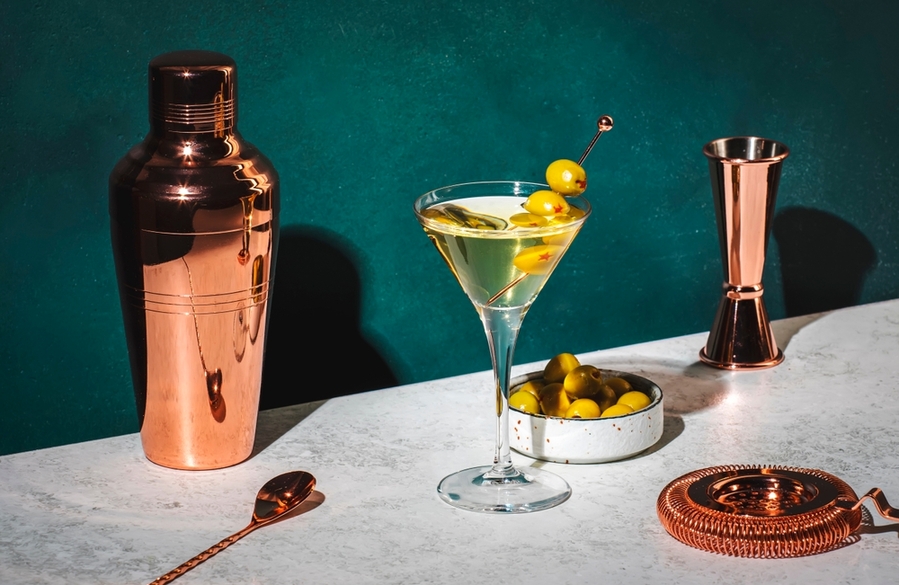
The Classic Martini, also called a Dry Martini, consists of gin and dry vermouth and the option to add a dash of aromatic bitters. The flavors you can expect are a dry botanical taste, i.e., juniper berries or hints of pine needles due to the gin.
Vermouth adds some more botanical taste to the drink. Don’t expect any sweetness from a classic dry martini. Unlike Mr. James Bond’s preference for shaken martinis, all martinis should be stirred (this is backed up by science).
Experts claim that when you shake a gin martini, you ‘crush’ the gin’s flavors and aromas. The ratio is usually six parts gin to one part of vermouth.
Wet Martini
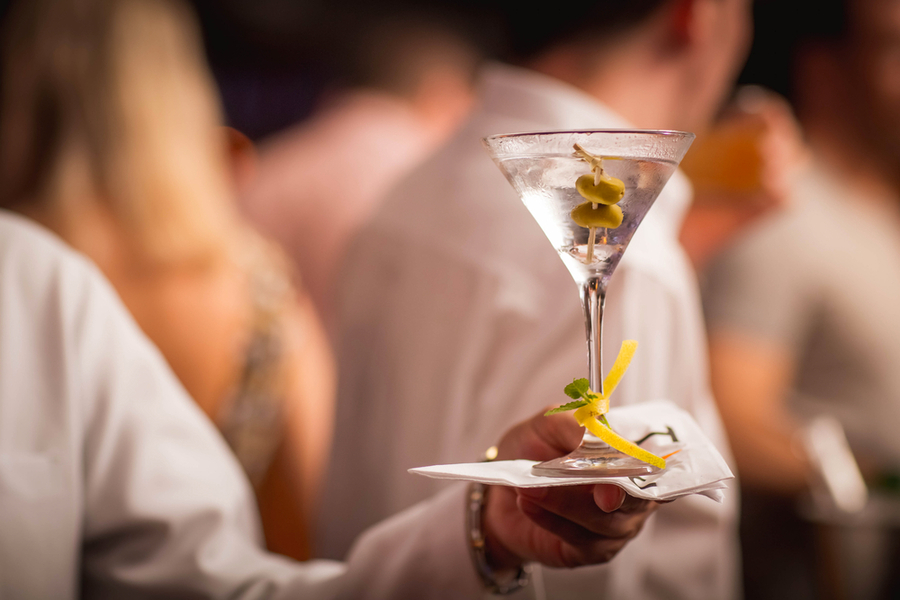
A wet martini is the opposite of a dry martini. The typical ratio is three parts gin to one part vermouth. Here you can expect the vermouth’s botanical aromas to come to the fore along with the gin’s juniper.
It’s also slightly sweeter than the classic (dry) martini.
Perfect Martini
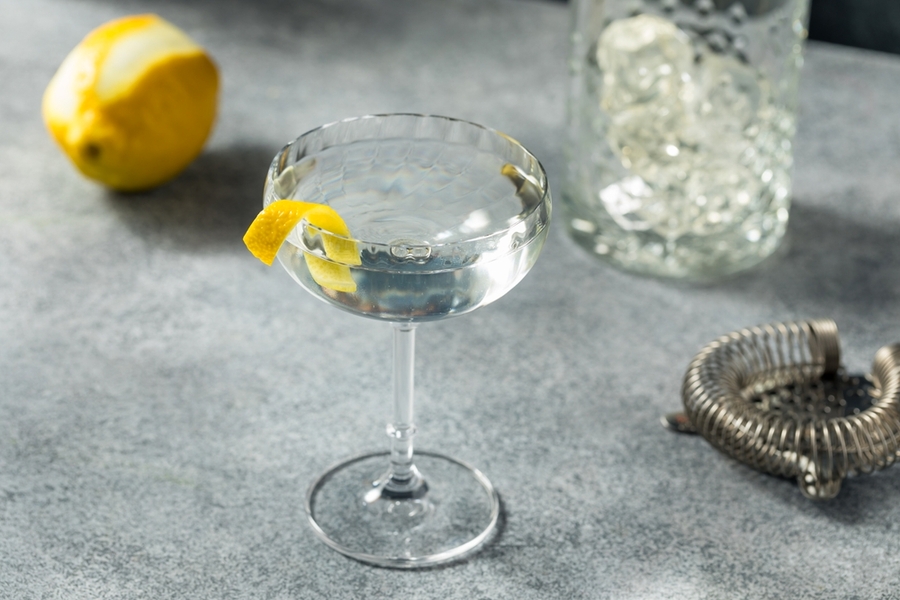
A Perfect Martini (nodding towards the Perfect Manhattan and Manhattan sitting at the bar) offers the best dry and sweet vermouth. The vermouth is split between dry (usually French, but it can also be Italian) and sweet (typically Italian rosso).
Dry vermouth and gin lack sweetness, and with the addition of sweet vermouth, you bring balance to the drink —just don’t tell Winston Churchill about this. He believed vermouth should be glanced at before the gin is poured into the glass and an olive is added.
Ultimately, you’ll have a perfectly made Perfect Martini with a hint of sweetness among the juniper’s citrus flavor and the dry vermouth’s herbal taste—a martini with a lot of complexity and depth.
Naked or Direct Martini
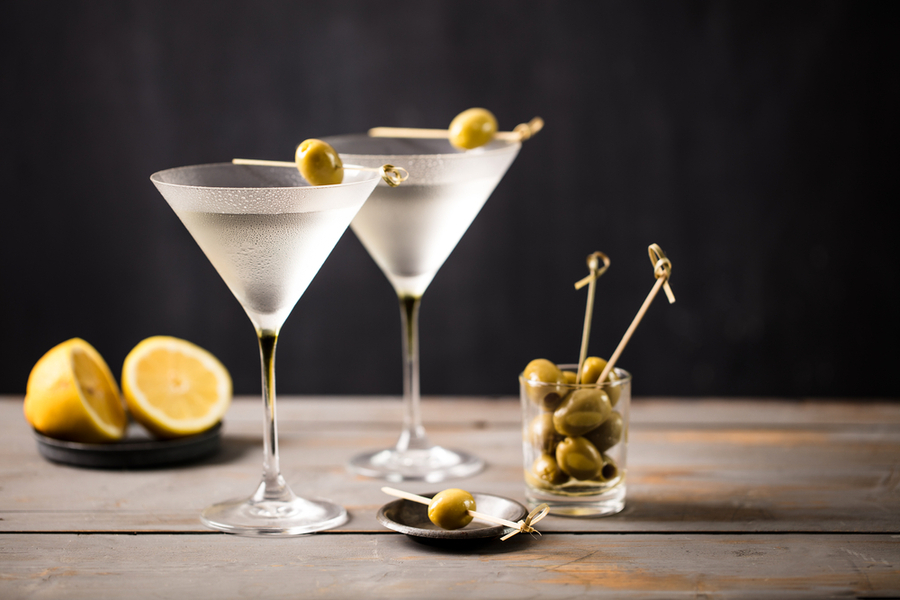
Brace yourself; this is a lip-smacking bone-dry martini. The ratio is 30 parts of gin to one part of vermouth, or in plain English, 2.5 oz gin (75 ml) of frozen gin and 1/12 oz (2.5 ml) vermouth. Yikes!
The key to this recipe is ice-cold gin (you must chill it for at least two hours in the freezer and the glasses to ensure everything is as cold as possible). There are some tricks you can look up on Difford’s Guide to enhance the flavor of your martini.
The taste, you ask… Think of it as extra-cold gin enhanced by a smattering of vermouth aroma.
Burnt Martini
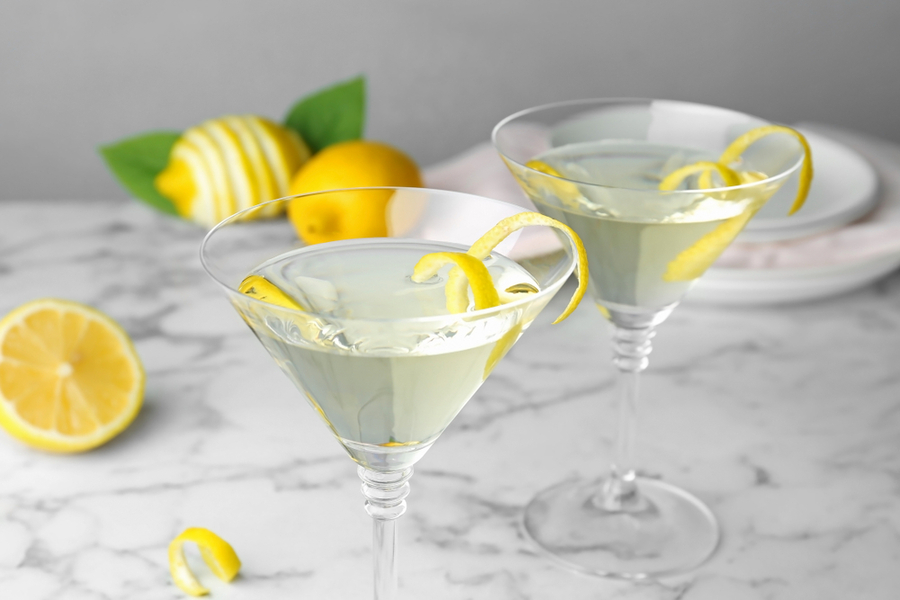
A rare order, but it exists and is an excellent introduction to the world of martinis for the seasoned whiskey drinkers among us. The ratios are four parts gin to one part of vermouth and one part of peated single malt whisky (4:1:1).
You can expect a botanical taste with juniper berries in the foreground with a smokey peat taste.
Dirty Martini
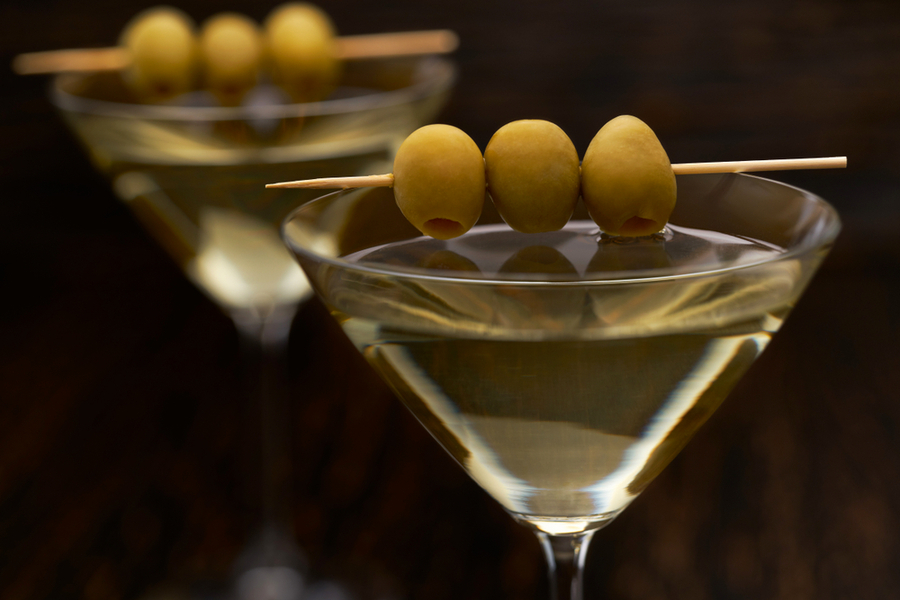
We promise there’s nothing dirty about the Dirty Martini. The dirty reference involves adding olive brine or juice to the cocktail. You can make it with gin, vodka, or tequila if you prefer! This results in a slightly salty cocktail with gin and vermouth forming the aromatic background.
What is the best part of a Dirty Martini? You can make it as dirty as you like, but start slow and build over a few cocktail mixes until you find your perfect balance.
Gibson Martini
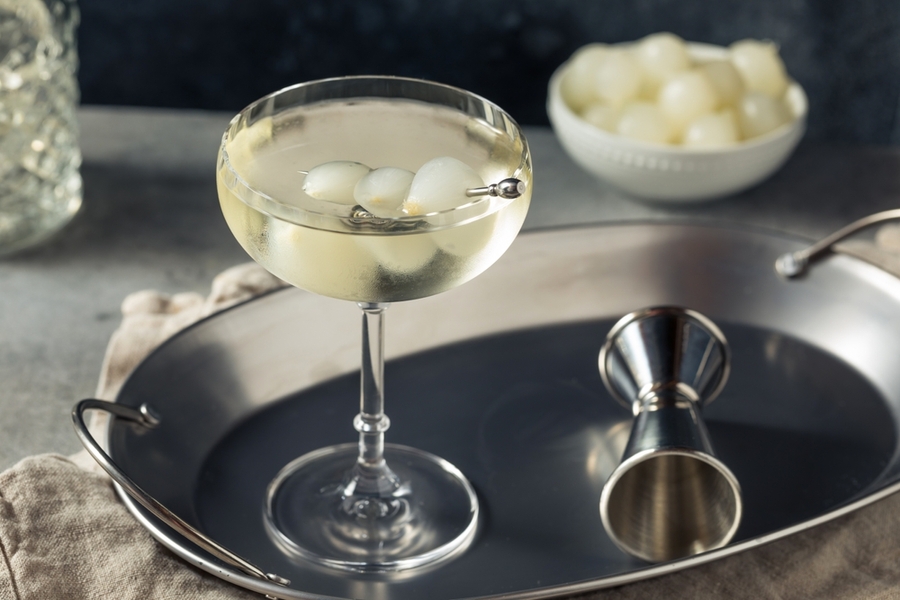
In line with the dirty martini, the Gibson takes a different route—instead of an olive for garnish, two pickled onions are skewered and added to the glass. The pickled onions will add a rich umami taste in addition to the gin and vermouth’s botanicals.
If you’d like to step it up, make it a ‘dirty’ Gibson and add some brine to your martini’s ingredients.
Vesper Martini
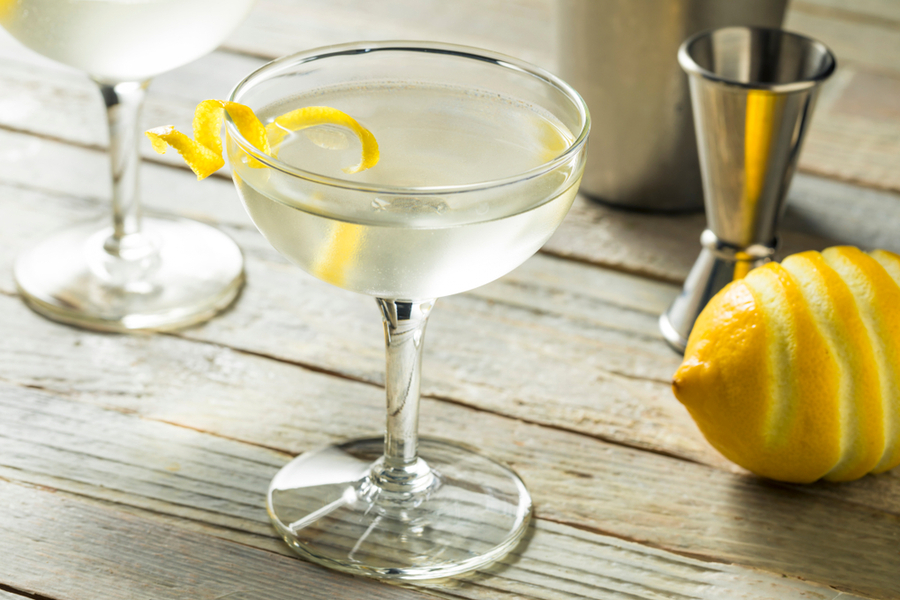
The Vesper Martini, James Bond’s famous shaken-not-stirred drink of choice, straddles the line between gin-based and vodka-based martinis. It is also not for the faint-hearted!
Ian Fleming, the author of Casino Royale, dreamed up this martini in 1953. The only problem with this cocktail is that Kina Lillet no longer exists, but all hope is certainly not lost!
Lillet Blanc can be used as a substitute for Kina Lillet. This cocktail scores 10/10 for both booziness and dryness on Difford’s Guide. Still, adding Lillet Blanc brings some welcome sweet balance to the overall juniper-forward Gordon’s London dry gin.
Don’t expect the sweetness if you follow Bond’s recipe (four parts gin to one measure vodka and half a measure of Lillet).
Vodka Martini aka Vodkatini

Because vodka is generally neutral tasting, this is an excellent option for vermouth’s dry, botanical taste to shine through.
The vodka martini is the choice of most drinkers because the botanical flavor doesn’t overpower their senses.
Neo-Martinis aka Imposter Martinis
No list of martinis would be complete without mentioning some of the ‘newer’ and popular kids on the block. The Espresso Martini and Bikini Martini have stood out repeatedly as crowd-pleasers and stood the test of time.
During the 1990s and early 2000s, there was a return to cocktails. The attitude shifted towards cocktails being the ‘in thing’ again. The 1980s certainly did not help the cocktail world with all the sexually charged names.
They started slapping onto cocktails (think, Sex on the Beach, Slippery Nipple, and Slow Comfortable Screw Against the Wall, to name a few). But, onwards and upwards, more martini variations and tastes exist to explore!
Espresso Martini
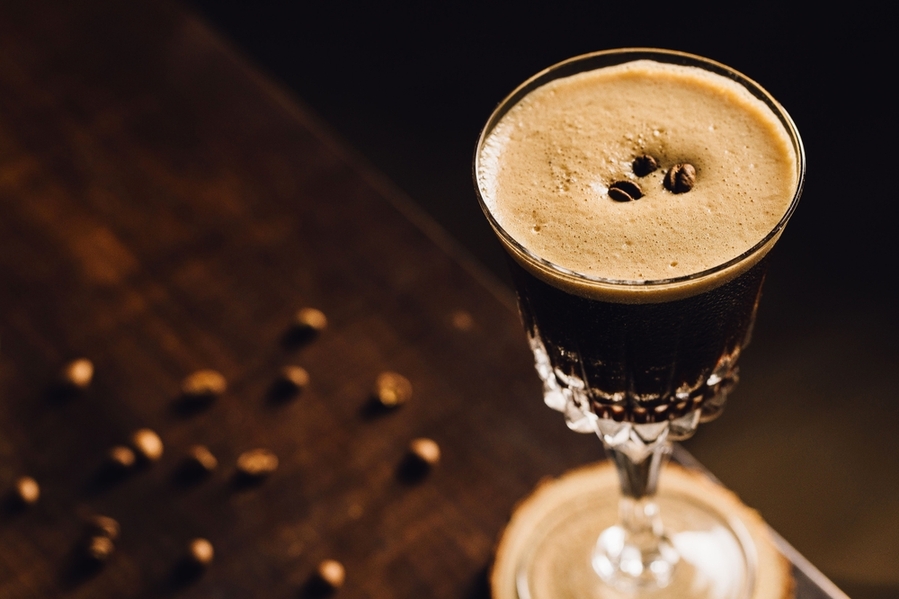
As bar lore goes, this one was invented for a particular top model who asked bartender Dick Bradsell at Fred’s Club in London to make her a drink that would wake her up and f**k her up. The Espresso Martini was born.
Two ounces of vodka, an ounce of espresso combined with half an ounce of Kahlua, and simple syrup will deliver a coffee cocktail with a hard kick and some sweetness.
Sour Apple Martini
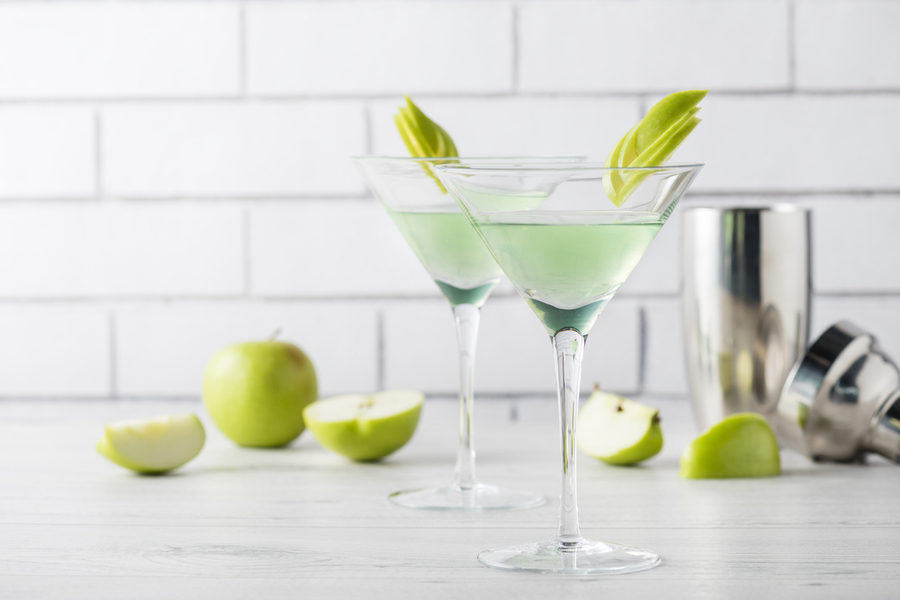
The name says it all; it tastes like a sour apple (Granny Smith apple, anyone?). This lime green ‘martini’ was invented in 1996 at Lola’s, a bar in West Hollywood. Numerous spinoffs were created, but try the original recipe or this one made with calvados (an apple brandy).
And, with vodka as one of the spirits, you can be sure it will have a distinct apple flavor.
Bikini Martini
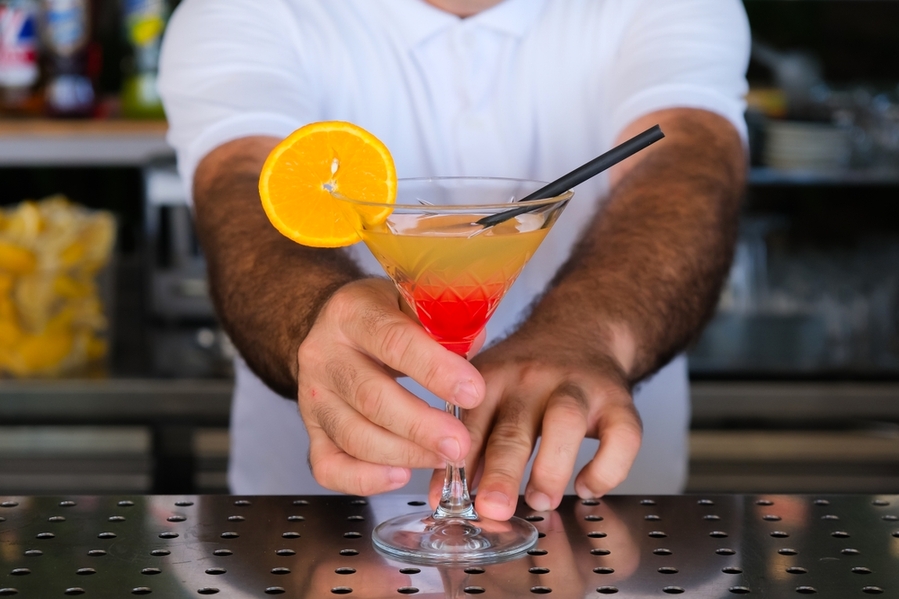
A beautiful blue gin martini. That’s all. It’s blue. Blue curaçao adds not only the blue color but also a zesty orange taste along with the gin’s botanicals and a hint of peach sweetness, bringing everything together perfectly.
The Bikini Martini is named after the famous two-piece swimsuit and is an adaptation of another cocktail by Dick Bradsell for an Agent Provocateur swimsuit shoot in 1999.
Conclusion
You might have noticed that we have listed 12 possible martini tastes that might interest you and help you find a taste you like. Apart from ten different ratios for the Dry Martini alone, you’ll be hard not to find a martini you like (Difford’s Guide lists over 200 variations on the martini theme).
The classic martini will taste herbal with a hint of citrus or even pine depending on the distiller’s methods and how much they concentrate on the juniper taste. You can expect a more herbaceous flavor if you replace gin with vodka.
Now, go out, read some recipes, and mix up a martini that appeals to your tastes.





